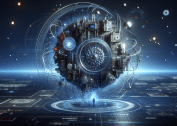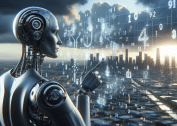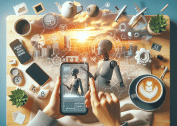Artificial intelligence tools are changing how people interact with technology in daily life and at work. This guide explores the rise of AI assistants, practical examples, ethics, and emerging trends in automation and machine learning, offering a balanced view for anyone curious about tomorrow’s tech landscape.
The Rapid Growth of AI Tools
The pace at which artificial intelligence is impacting modern industries is remarkable. Companies and institutions are adopting AI-powered tools to optimize processes, handle data, and solve previously complex challenges. Machine learning and automation are not just buzzwords anymore; they are practical technologies embedded in finance, healthcare, customer service, and even everyday devices. There has been a surge in patent applications and research papers focusing on AI assistants and automated decision systems, revealing widespread industry interest (Source: https://www.nature.com/articles/d41586-019-02215-5).
One popular example is the use of chatbots and voice assistants in consumer technology. Most smartphones now include some form of natural language interface, making it easier for users to manage schedules, search the web, or control home appliances with simple commands. The convenience has led to higher adoption rates and sparked creative uses in education, health tracking, and even entertainment. This shift toward smart automation continues as software and hardware developers expand the abilities of these tools.
In workplaces, businesses turn to artificial intelligence for forecasting, logistics, and workflow optimization. What once required hours of manual labor can be accomplished in seconds through well-trained machine learning models. This integration doesn’t only benefit large organizations. Startups and freelancers also access AI-driven solutions to streamline administrative tasks, customer interaction, and data analysis. It’s becoming clear that AI adoption is no longer reserved for tech giants—it’s a movement touching all professional backgrounds.
How AI Automation Changes Daily Routines
The influence of AI in daily routines grows steadily. Automatic reminders, smart calendars, and home automation all rely on complex algorithms to anticipate needs and cut down on manual input. For instance, digital personal assistants now help users track fitness, suggest healthier routines, and manage reminders for important events. This blend of predictive analytics and on-the-fly personalization introduces efficiencies that can relieve decision fatigue and boost productivity.
Smart speakers and connected household devices mark another advance in how people live and work. Voice-activated commands can control lighting, play music, or even adjust thermostats, creating hands-free convenience previously unattainable. Research shows that households adopting these intelligent systems report higher satisfaction in energy management and increased time for family or hobbies (Source: https://www.energystar.gov/products/smart_home_energy_management_systems).
Yet, the biggest impact may be seen in time spent on communication and organization. Email sorting, appointment scheduling, and information retrieval are being handled largely by machine learning-backed apps. This unleashing of manual overhead means people can focus on creative, strategic, or personally meaningful tasks instead of repetitive chores. Such shift underscores the power of AI as more than a technical marvel—it’s a life-enhancer for its users.
AI Assistants in the Modern Workplace
Across industries, AI assistants handle routine correspondence, customer service queries, and data reporting with growing sophistication. Businesses deploy conversational agents based on natural language processing, allowing for 24/7 customer interaction without human fatigue. This supports not only operational efficiency but also enhances user experience, as these assistants quickly address common requests and direct more complex needs to specialists (Source: https://www.mckinsey.com/capabilities/quantumblack/our-insights/artificial-intelligence-the-next-digital-frontier).
Among knowledge workers, applications like automated data analysis and report generation are game-changers. AI tools can rapidly sift through large datasets to extract insights or suggest next steps. This reduces the risk of human error and accelerates project delivery. Managers gain access to advanced dashboards and predictive models, empowering better decision-making based on near real-time analytics.
Small businesses are embracing automation for marketing, task management, and even hiring. AI-driven platforms can help draft content, segment target audiences, and pre-screen candidates based on role fit. By automating repetitive aspects of work, staff members are freed to address pressing issues that require creativity or nuanced judgment. Such integration of AI doesn’t eliminate jobs outright but instead transforms what professionals focus on each day, introducing a new era of collaboration between human and machine.
Ethical Considerations and Trust in AI
As AI tools become more central to daily activities, important ethical considerations have emerged. Concerns focus on privacy, transparency, and bias in automated decision-making. Machine learning models are only as fair as the data they’re trained on. Flawed, incomplete, or biased datasets can produce algorithms that reinforce existing disparities. It’s a challenge that researchers and policymakers are actively addressing (Source: https://ai.google/responsibility/fairness/).
Transparency is another central issue. People increasingly ask: How does an AI tool reach its conclusions? Efforts to create “explainable AI” are growing, seeking systems that not only provide results but also present clear reasoning for their outputs. This development is crucial in healthcare and finance, where decisions materially impact human wellbeing and livelihoods.
Ultimately, trust is built when users understand both the capabilities and limits of AI. Ongoing education campaigns, combined with strict data handling guidelines, help inform and protect individuals using these technologies. Participatory AI design is an emerging field where companies invite users and stakeholders into the development process, ensuring products reflect diverse perspectives and public expectations.
Future Trends: What Awaits in AI and Automation
Experts predict the next wave of AI will provide even greater personalization and predictive capabilities. Wearable devices might soon do more than count steps—they could anticipate health issues or suggest proactive interventions based on real-time biometrics and environment factors. Already, research institutions are piloting AI for early illness detection and chronic disease management (Source: https://www.nih.gov/news-events/nih-research-matters/artificial-intelligence-healthcare).
In fields like transportation, AI’s integration with robotics is revolutionizing logistics and delivery, with autonomous vehicles and drones becoming more reliable and widely tested. Scientists envision environments where smart infrastructure adapts to people’s presence, optimizing public transport, lighting, and climate for community needs. Automated planning tools will likely become standard in urban management, contributing to efficiency and sustainability goals.
The classroom is also set to change, with adaptive learning platforms tailoring assignments and feedback according to individual strengths and struggles. Rather than one-size-fits-all, future education could rely on constant assessment and user-specific development plans powered by AI. As this trend accelerates, lifelong learning and flexibility become central themes for both professionals and students.
Opportunities and Challenges Ahead
The potential of AI tools to boost productivity and unleash creative potential is vast, yet so are the challenges. As more critical processes rely on automation, there is a heightened responsibility to monitor, audit, and refine these systems. Collaboration between technologists, ethicists, and regulators is essential to ensure AI works for the benefit of all (Source: https://www.brookings.edu/research/ai-ethics-and-governance/).
A common concern is the evolution of employment as repetitive tasks become automated. While certain positions may phase out, new roles are emerging that focus on oversight, data curation, and AI stewardship. Opportunities are increasing for people with skills related to AI literacy and interdisciplinary collaboration. Resources for upskilling and reskilling continue to expand as both individuals and organizations strive to prepare for an evolving workforce.
Success, for most users, lies in embracing the new while maintaining a critical perspective. Continuous learning remains vital. Whether leveraging automation for business growth, daily convenience, or scientific discovery, a balanced understanding of both promise and pitfalls makes technology adoption more rewarding and sustainable.
References
1. Hao, K. (2019). What is machine learning? Retrieved from https://www.nature.com/articles/d41586-019-02215-5
2. ENERGY STAR. (2023). Smart Home Energy Management Systems. Retrieved from https://www.energystar.gov/products/smart_home_energy_management_systems
3. McKinsey & Company. (2017). Artificial intelligence: The next digital frontier? Retrieved from https://www.mckinsey.com/capabilities/quantumblack/our-insights/artificial-intelligence-the-next-digital-frontier
4. Google Research. (2022). AI Fairness. Retrieved from https://ai.google/responsibility/fairness/
5. National Institutes of Health. (2021). Artificial intelligence in healthcare. Retrieved from https://www.nih.gov/news-events/nih-research-matters/artificial-intelligence-healthcare
6. Brookings Institution. (2022). AI ethics and governance. Retrieved from https://www.brookings.edu/research/ai-ethics-and-governance/









